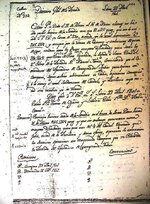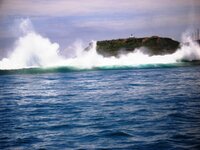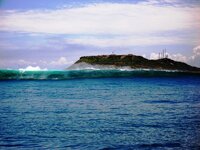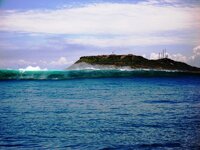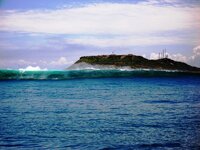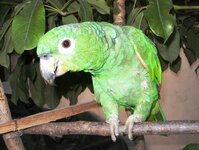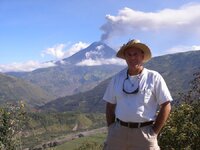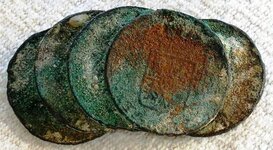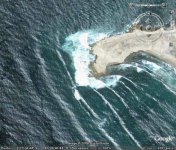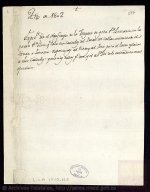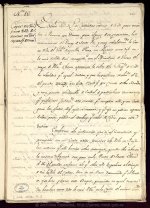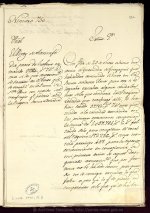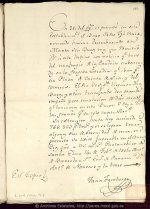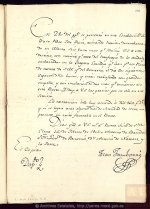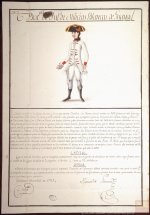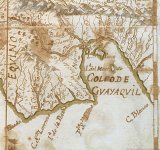When considering whether or not a wreck is economically viable and worth the expense and effort to search for and recover I have long found that it is always best before making a decision to set aside popular contemporary and usually un cited works of unaccredited hack historians about shipwrecks and instead seek out and deal as much as possible with any available primary source information pertaining to the subject or target of interest. In other words go to the source of the information in its rawest original form and don't rely on secondary sources which can often be biased, made up or presumptive and non objective.
In other words who cares what Marx or Potter either made up, copied, misquoted or imagined they leared from each other when the actual original accident report and salvage record written by the men who were present at the time of the wreck is available to be studied instead?
In this case a few so called arm chair experts have recently stated that the Leocadia wreck was essentially "cleaned out" by the Spanish and that contemporary pirates have finished the pickings and so nothing much more of note remains to be recovered. Actually, nothing could be further from the truth and the preponderance of evidence beggars otherwise.
According to primary source documents, in this case the actual salvage report which we hold a complete copy of, The Santa Leocadia wrecked at the Punta Santa Elena in late November 1800 and by January 1801 a large recovery operation was already underway to recover the 1.2 million registered pesos of gold and silver, as stated in the accident report, that had been on board.
By late April 1801, when the salvage effort was concluded due to the onset of heavy seasonal seas which also broke up and dispersed the main concentration of the remaining hull structure and made further recovery impossible, the total treasure recovered to that date was 940,000 pesos of the 1.2 million registered. The record further states that there was no resumption of salvage work the following season. Moreover, anyone familiar with the site would quickly understand why: 30 ft waves breaking upon it for weeks on end during certain months quickly disperses a wooden wreck and breaks any remaining structure to pieces.
Thus, according to the records, fully one sixth of the treasure was NOT recovered and the vast majority of that still remains scattered in sand pockets or trapped down in cracks and fissures buried on the site. By the way, 260,000 pesos in coin value is more coins than were carried on the Atocha and is equivalent to 2,340,000 (two million three hundred and forty thousand, 1 real coins or, if they were all eights, 292,500 eight real coins. That is also about 13.4 tons of silver or just about 2.5 tons less than the total of the recent snatch and grab recovery by Odyssey Marine. Further, according to the same original Spanish salvage report, half the artillery was also left un recovered as were most of the "artifacts."
Thus, the Santa Leocadia site is still very rich and anyone who claims otherwise is merely being opinionated and is devoid of fact. Moreover, in the course of examining past finds made by others on the site, I have noted at least 120 years of dates present in this numismatic assemblage with all denominations of coins representing three mints being present on the wreck. This seems unusual however since my past experience on other coin wrecks never produced much more than 30 or 40 years of dates anterior to the time of the actual wreck date. Thus, besides the numismatic evidence that there could possibly be at least two wrecks at the same location, not to mention possibly over one million individual coins of all denominations still left to be recovered just from the Leocadia horde alone, one can only wonder what else is lost in there? Anchors from two different periods are also present on the site which also add fuel to a second wreck theory.
Meanwhile, In light of both the historic documentation and contemporary tangible evidence, I think anyone's investors would be happy to be locked into such a wreck lease.
Meanwhile, my recent research into contemporary events at this site, along interviews with numerous persons on both sides of the law (and who shall all remain nameless), and between legitimate salvers and known pirates picking at the site (which itself is a large area which has never before been digitally mapped before I came along and which survey was performed legally and under supervision of naval personnel) , I doubt if more than 3000-4000 coins have ever been recovered from the site in the past by both legal and illegal operations and that figure itself is being very liberal.
However, even if that number were inflated by a factor of ten it would still leave behind a huge treasure left to be recovered by any standard. Also, just at today's silver value of $17 oz, melted down and sold at scrap, what remains of silver alone at the Leocadia site is worth around 5 million dollars. Nice coins bring a lot more, we all know and there are gold coins from the periods of Carlos II and III are present, too. Coins from Potosi, Lima and the rare Santiago Mint have all been noted as have been rare Luis I pieces and so the site retains exciting potential.
Finally, there is another far richer and older wreck located less than a mile from the Santa Leocadia site also inside the same exclusive lease area we currently are managing under contract and so in that regard anyone who wonders why a person would waste time on some thing as paltry as the Leocadia is absolutely correct.
The Leocadia is indeed just a small prize by comparison with what remains the Aiguilar Volante (only 30% recovered), which location we have also recently site surveyed with mag and have mapped the undisturbed wreck site. This other ship, when lost, was transporting the only mint production in 1698 of Cuzco gold coins ever produced along with a mass of other Lima gold and silver which are still frequently found on only a specific beach here after storms and our investors are thrilled by the prospects and the evidence accumulated to date. (Regarding Cuzco gold: read Dr Alan Craig's chapter on Cuzco gold in his book on the Florida gold collection) Meanwhile,regarding the Leocadia, one may read the opinions of self proclaimed arm chair know-it-alls, or one may read the words on the last page of the summary of the Spanish salvage report I have attached below. Let the reader decide which be more convincing. Enjoy.
Saludos,
Patrimony
In other words who cares what Marx or Potter either made up, copied, misquoted or imagined they leared from each other when the actual original accident report and salvage record written by the men who were present at the time of the wreck is available to be studied instead?
In this case a few so called arm chair experts have recently stated that the Leocadia wreck was essentially "cleaned out" by the Spanish and that contemporary pirates have finished the pickings and so nothing much more of note remains to be recovered. Actually, nothing could be further from the truth and the preponderance of evidence beggars otherwise.
According to primary source documents, in this case the actual salvage report which we hold a complete copy of, The Santa Leocadia wrecked at the Punta Santa Elena in late November 1800 and by January 1801 a large recovery operation was already underway to recover the 1.2 million registered pesos of gold and silver, as stated in the accident report, that had been on board.
By late April 1801, when the salvage effort was concluded due to the onset of heavy seasonal seas which also broke up and dispersed the main concentration of the remaining hull structure and made further recovery impossible, the total treasure recovered to that date was 940,000 pesos of the 1.2 million registered. The record further states that there was no resumption of salvage work the following season. Moreover, anyone familiar with the site would quickly understand why: 30 ft waves breaking upon it for weeks on end during certain months quickly disperses a wooden wreck and breaks any remaining structure to pieces.
Thus, according to the records, fully one sixth of the treasure was NOT recovered and the vast majority of that still remains scattered in sand pockets or trapped down in cracks and fissures buried on the site. By the way, 260,000 pesos in coin value is more coins than were carried on the Atocha and is equivalent to 2,340,000 (two million three hundred and forty thousand, 1 real coins or, if they were all eights, 292,500 eight real coins. That is also about 13.4 tons of silver or just about 2.5 tons less than the total of the recent snatch and grab recovery by Odyssey Marine. Further, according to the same original Spanish salvage report, half the artillery was also left un recovered as were most of the "artifacts."
Thus, the Santa Leocadia site is still very rich and anyone who claims otherwise is merely being opinionated and is devoid of fact. Moreover, in the course of examining past finds made by others on the site, I have noted at least 120 years of dates present in this numismatic assemblage with all denominations of coins representing three mints being present on the wreck. This seems unusual however since my past experience on other coin wrecks never produced much more than 30 or 40 years of dates anterior to the time of the actual wreck date. Thus, besides the numismatic evidence that there could possibly be at least two wrecks at the same location, not to mention possibly over one million individual coins of all denominations still left to be recovered just from the Leocadia horde alone, one can only wonder what else is lost in there? Anchors from two different periods are also present on the site which also add fuel to a second wreck theory.
Meanwhile, In light of both the historic documentation and contemporary tangible evidence, I think anyone's investors would be happy to be locked into such a wreck lease.
Meanwhile, my recent research into contemporary events at this site, along interviews with numerous persons on both sides of the law (and who shall all remain nameless), and between legitimate salvers and known pirates picking at the site (which itself is a large area which has never before been digitally mapped before I came along and which survey was performed legally and under supervision of naval personnel) , I doubt if more than 3000-4000 coins have ever been recovered from the site in the past by both legal and illegal operations and that figure itself is being very liberal.
However, even if that number were inflated by a factor of ten it would still leave behind a huge treasure left to be recovered by any standard. Also, just at today's silver value of $17 oz, melted down and sold at scrap, what remains of silver alone at the Leocadia site is worth around 5 million dollars. Nice coins bring a lot more, we all know and there are gold coins from the periods of Carlos II and III are present, too. Coins from Potosi, Lima and the rare Santiago Mint have all been noted as have been rare Luis I pieces and so the site retains exciting potential.
Finally, there is another far richer and older wreck located less than a mile from the Santa Leocadia site also inside the same exclusive lease area we currently are managing under contract and so in that regard anyone who wonders why a person would waste time on some thing as paltry as the Leocadia is absolutely correct.
The Leocadia is indeed just a small prize by comparison with what remains the Aiguilar Volante (only 30% recovered), which location we have also recently site surveyed with mag and have mapped the undisturbed wreck site. This other ship, when lost, was transporting the only mint production in 1698 of Cuzco gold coins ever produced along with a mass of other Lima gold and silver which are still frequently found on only a specific beach here after storms and our investors are thrilled by the prospects and the evidence accumulated to date. (Regarding Cuzco gold: read Dr Alan Craig's chapter on Cuzco gold in his book on the Florida gold collection) Meanwhile,regarding the Leocadia, one may read the opinions of self proclaimed arm chair know-it-alls, or one may read the words on the last page of the summary of the Spanish salvage report I have attached below. Let the reader decide which be more convincing. Enjoy.
Saludos,
Patrimony


